Observatories
We look to the sky and face our roots.
- How is it time to be understood? Do we understand time when we look into space? In space there is an answer to the future, but not the future as the answer. The information, created out of the universe with the most modern technology, are already past until they are recognizable for the human in the present. So when we look into the present, we look into the past. And from the past, we can concludethe future. I wanted to search for past traces of the spots in which the future has been researched.
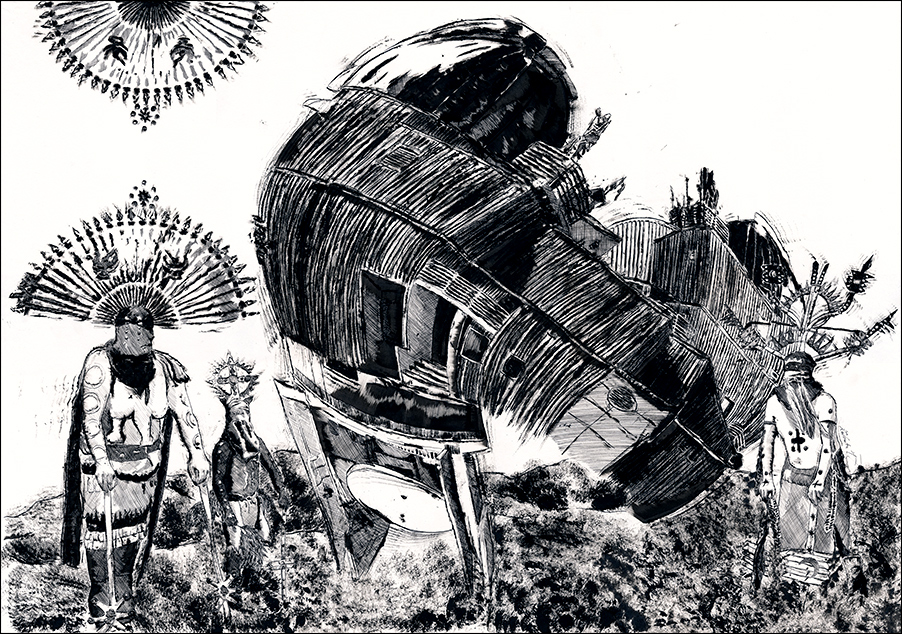
The Crown Dancers of the San Carlos Apaches in Arizona had to transfer their land to the stars. On their sacred land was build the “ Mount Graham International Observatory” the University of Arizona in partnership with the Vatican. The Apaches are not allowed to visit their sacred land anymore.
86cm x 122cm, Dip Pen Drawing, Ink on Paper, 2017
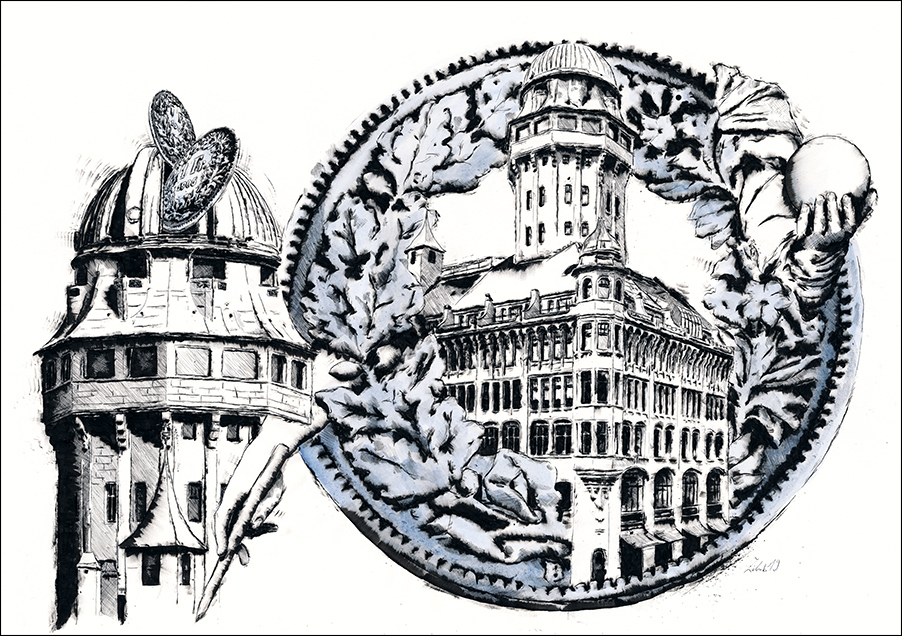
Urania Sternwarte, Zurich, Switzerland
122cm x 86cm, Dip Pen Drawing, Shellack Ink and Ink on Paper, 2019
The inquiring minds and business sense shook hands by the planning and implementation of the public observatory Urania in Zurich. For ensuring the economic base, the observatory tower is architectonically connected with a commercial building.
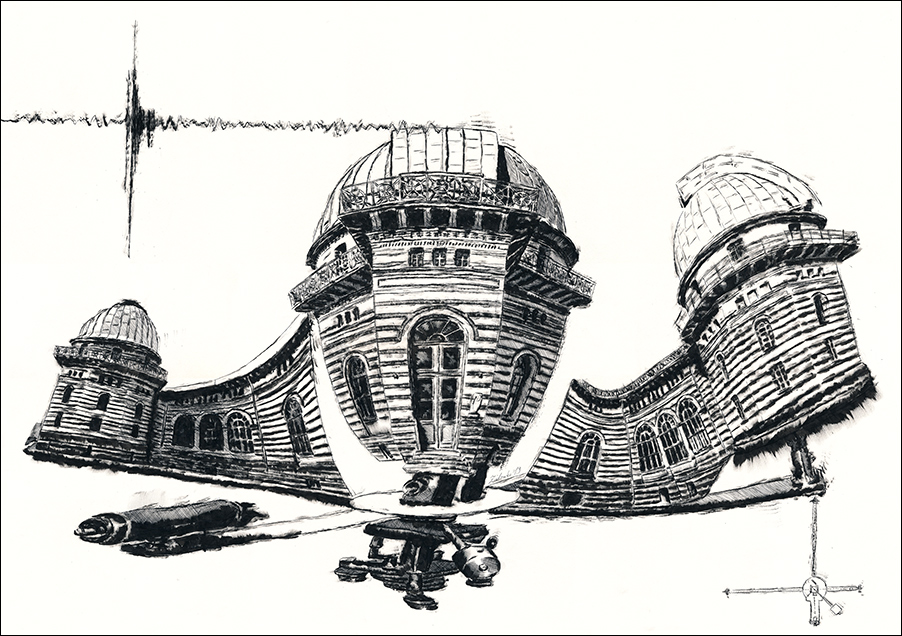
Michelson-Haus Observatory, Potsdam, Germany
86cm x 122cm, Dip Pen Drawing, Ink on Paper, 2019
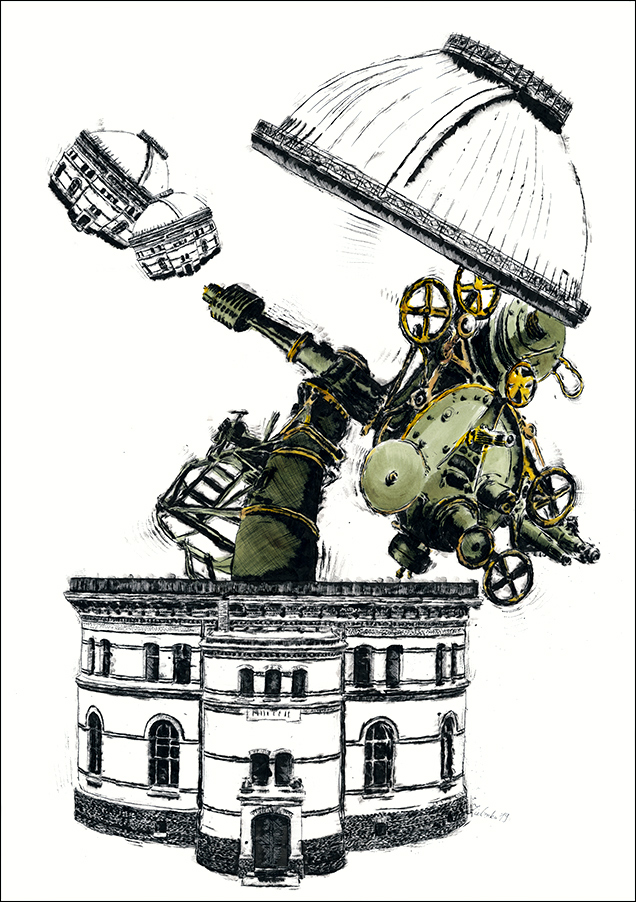
Great Refractor
Observatory Potsdam, Germany
122cm x 86cm, Dip Pen Drawing, Shellack Ink and Ink on Paper, 2019
Double stars can be detected with the large refractor.
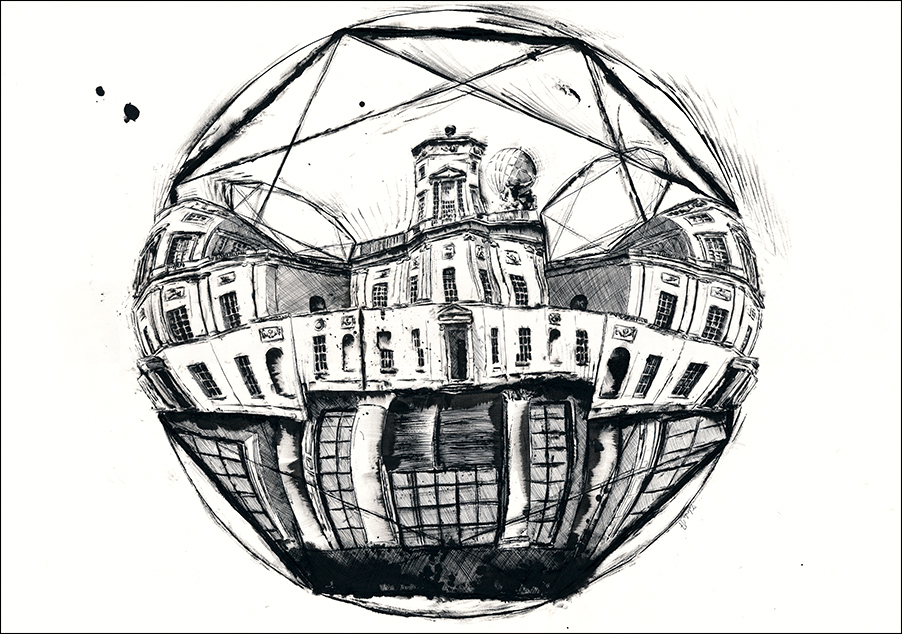
Radcliffe Observatory
Oxford University, England
86cm x 122cm, Dip Pen Drawing, Ink on Paper, 2017
Radcliffe Observatory was architecturally inspired by the Tower of the Winds in Athens which was built by the mathematician, architect and Astronomer Andronikos built by Kyrrhestes.
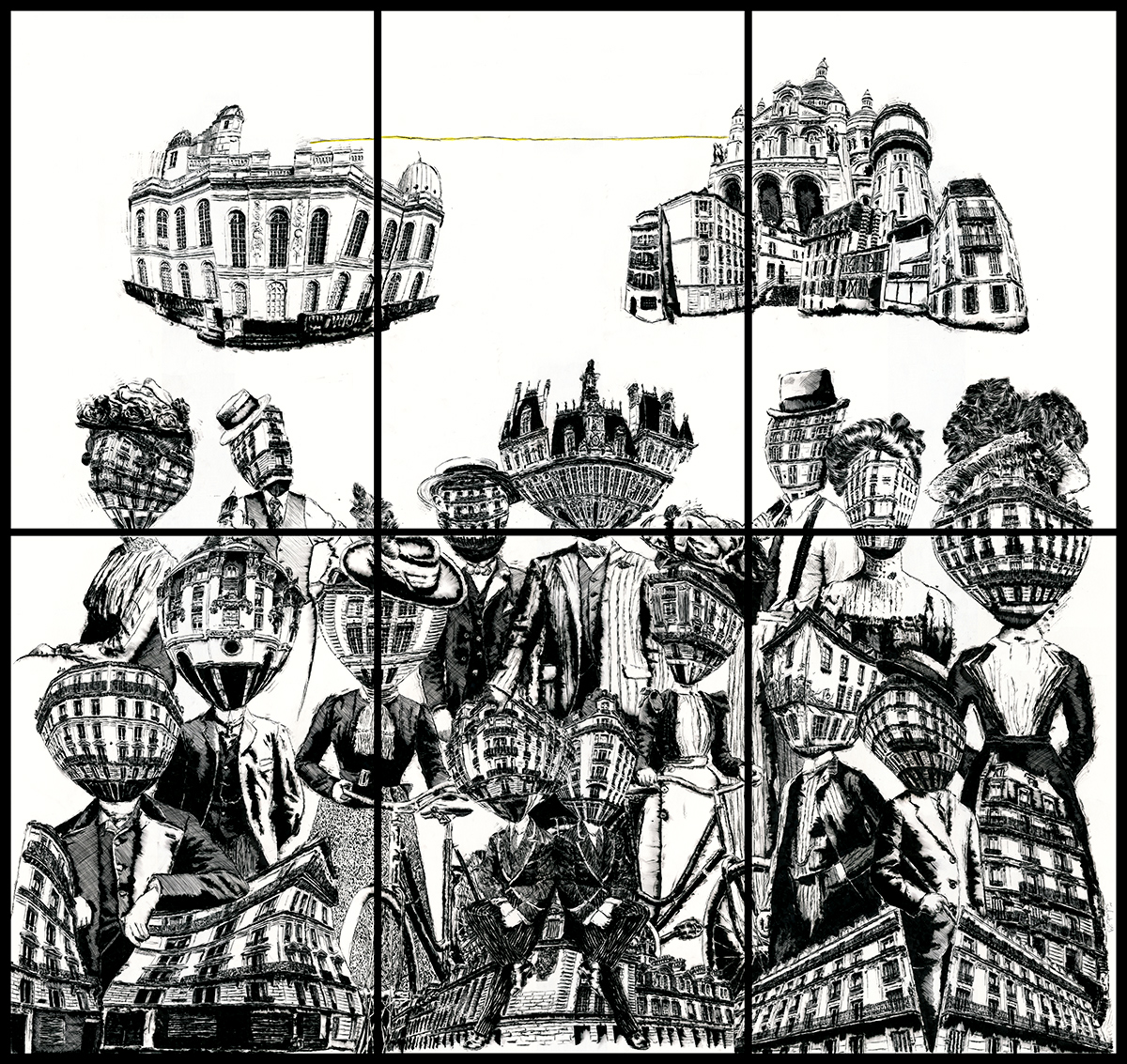
Observatoire de Paris, France
The French physicist Hippolyte Fizeau measured the speed of light in 1849 from a little town called Suresnes to Montmartre Paris. The experiment was repeated and confirmed by the Physicist Alfred Cornu. He measured the speed of light from the Observatory in Paris to the Montmartre.
Polyptych, 245cm x 260cm, Dip Pen Drawing, Shellack Ink and Ink on Paper, 2018
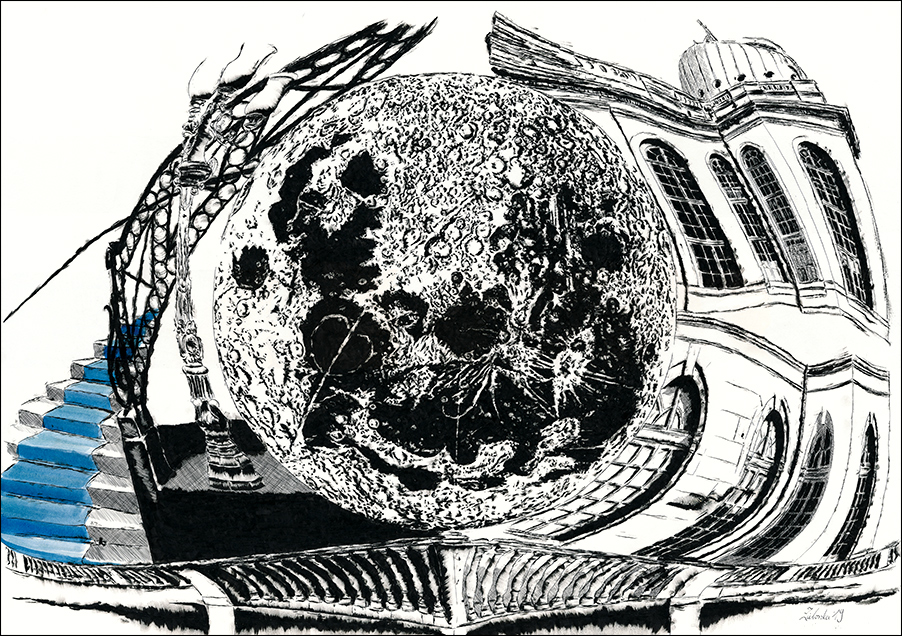
Stairway to the moon (Selenography)
Observatoire de Paris, France
86cm x 122cm, Dip Pen Drawing, Shellack Ink and Ink on Paper, 2018
The first photography of the moon was made in the Observatory of Paris. On the way to the dome you step on a blue carpet. A stairway to the stars.
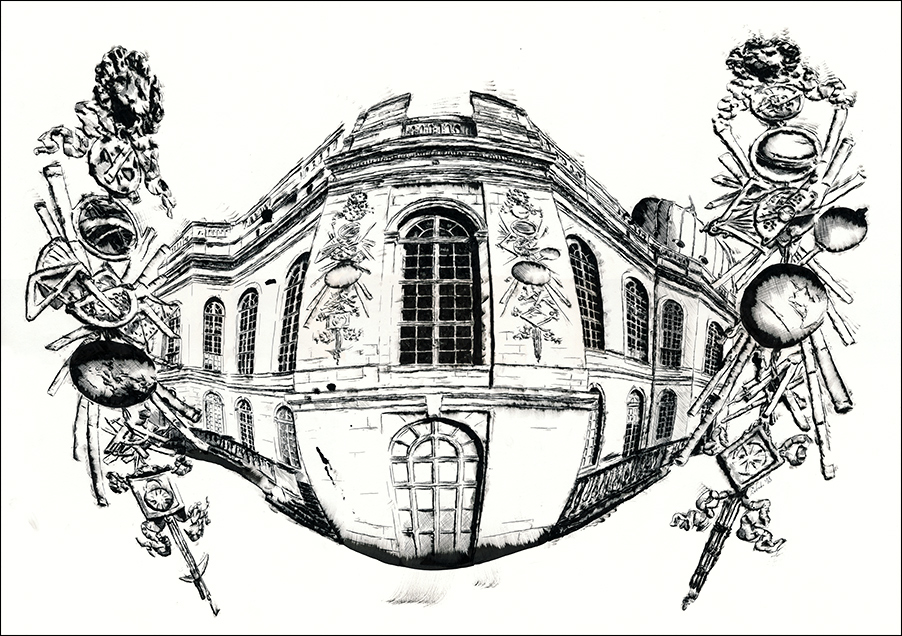
Observatoire de Paris, France
86cm x 122cm, Dip Pen Drawing, Ink on Paper, 2018
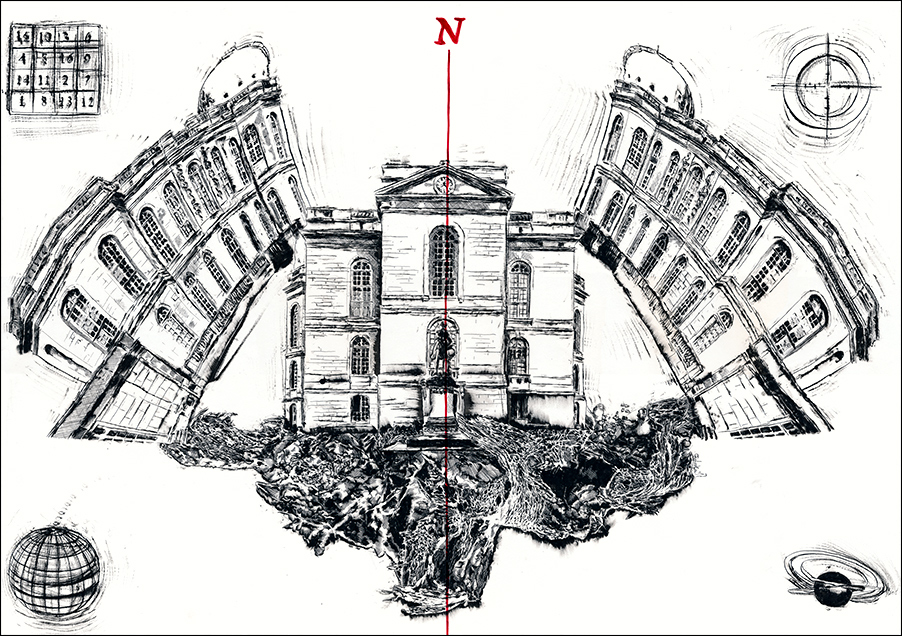
Le méridien de Paris
Observatoire de Paris, France
86cm x 122cm, Dip Pen Drawing, Shellack Ink and Ink on Paper, 2017
Louis XIV founded the Observatory of Paris in 1667. It was built on the meridian of Paris. The 4 corners of the drawing are shown the symbols of the researchers who were involved in the construction of the observatory.
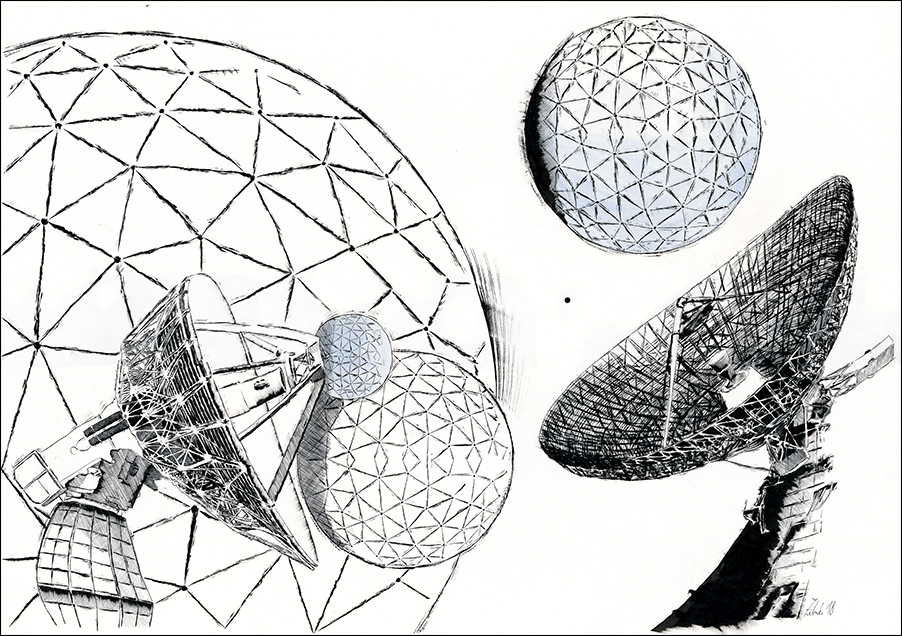
86cm x 122cm, Dip Pen Drawing, Shellack Ink and Ink on Paper, 2018
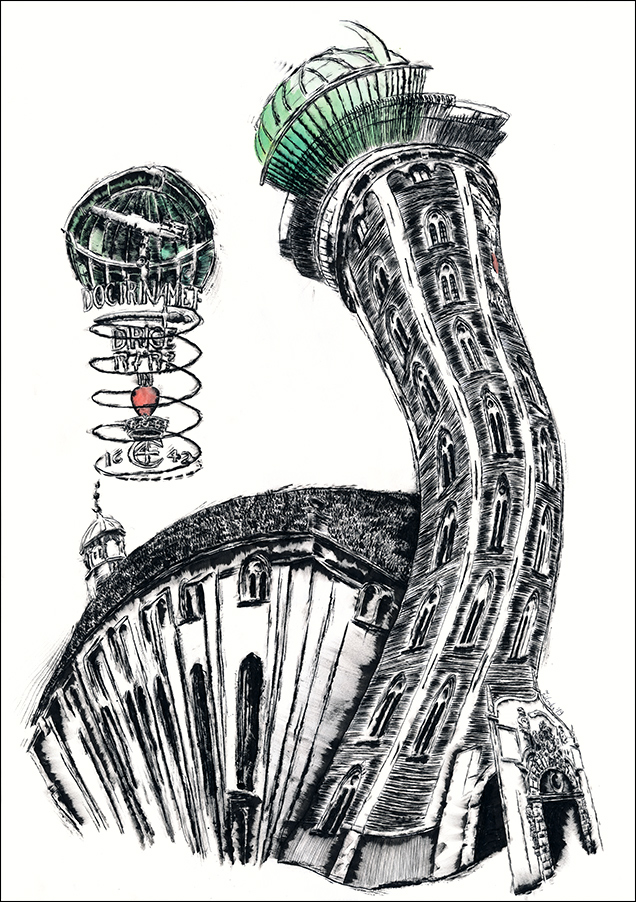
Rundetaarn
Observatorium Copenhagen, Denmark
122cm x 86cm, Dip Pen Drawing, Shellack Ink and Ink on Paper, 2019
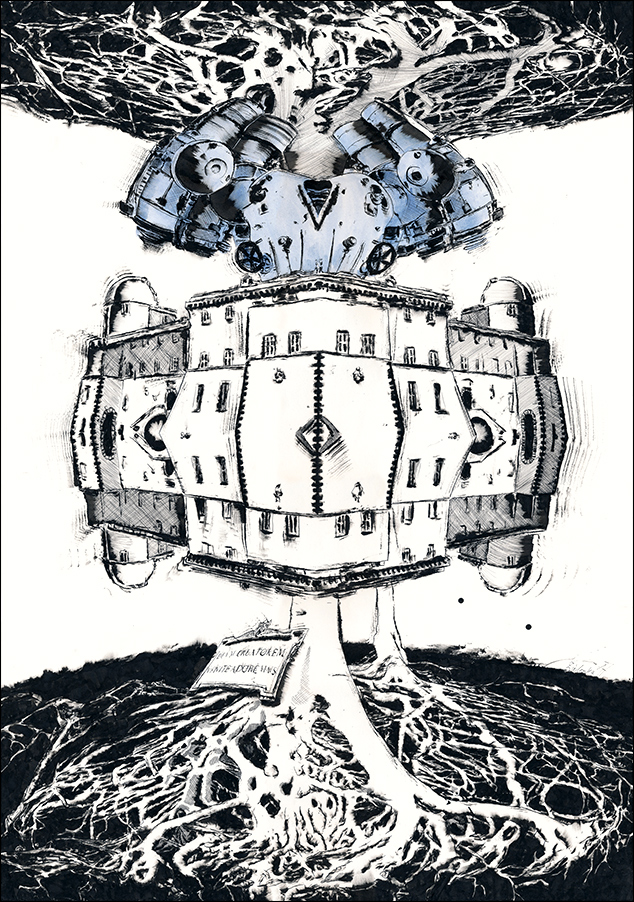
Castel Gandolfo
Observatorium Vatican City, Italy
122cm x 86cm, Dip Pen Drawing, Shellack Ink and Ink on Paper, 2017
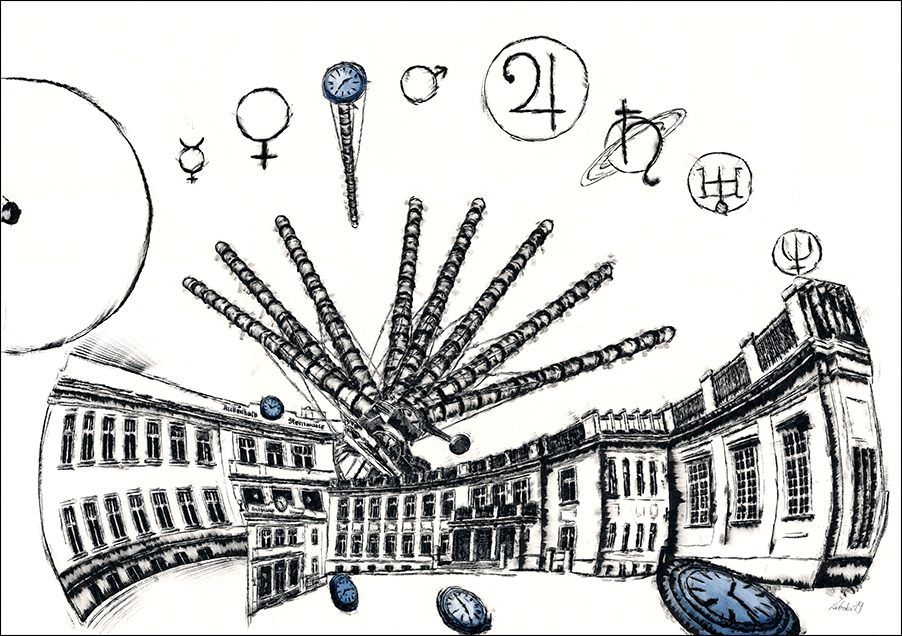
Großer Refraktor, Himmelskanone
Archenhold Sternwarte Berlin, Germany
86cm x 122cm, Dip Pen Drawing, Shellack Ink and Ink on Paper, 2019
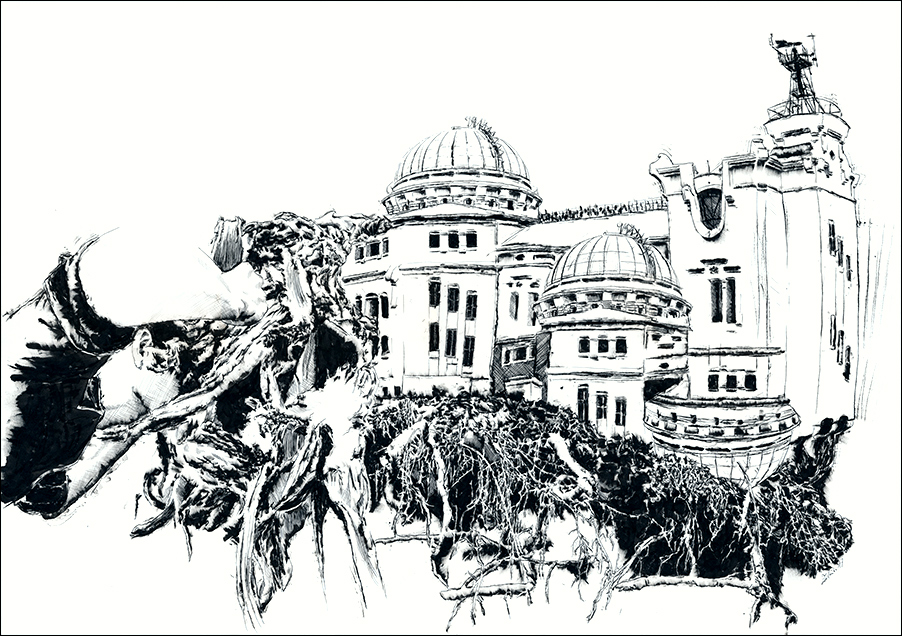
86cm x 122cm, Dip Pen Drawing, Ink on Paper, 2017
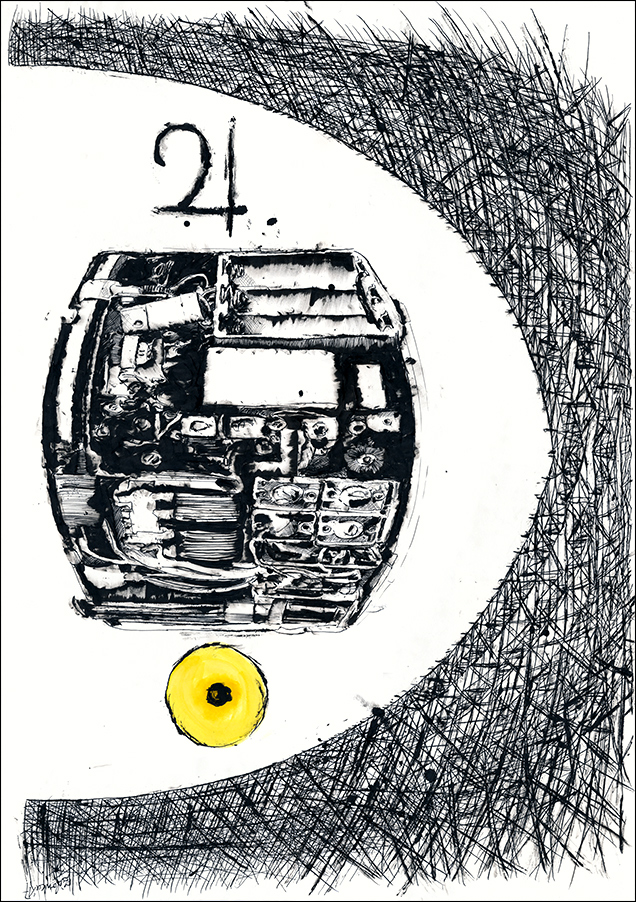
Station de Radioastronomie
Nançay, France
122cm x 86cm, Dip Pen Drawing, Shellack Ink and Ink on Paper, 2017
Among other things the radio radiation from Jupiter and the sun is measured in Nançay.
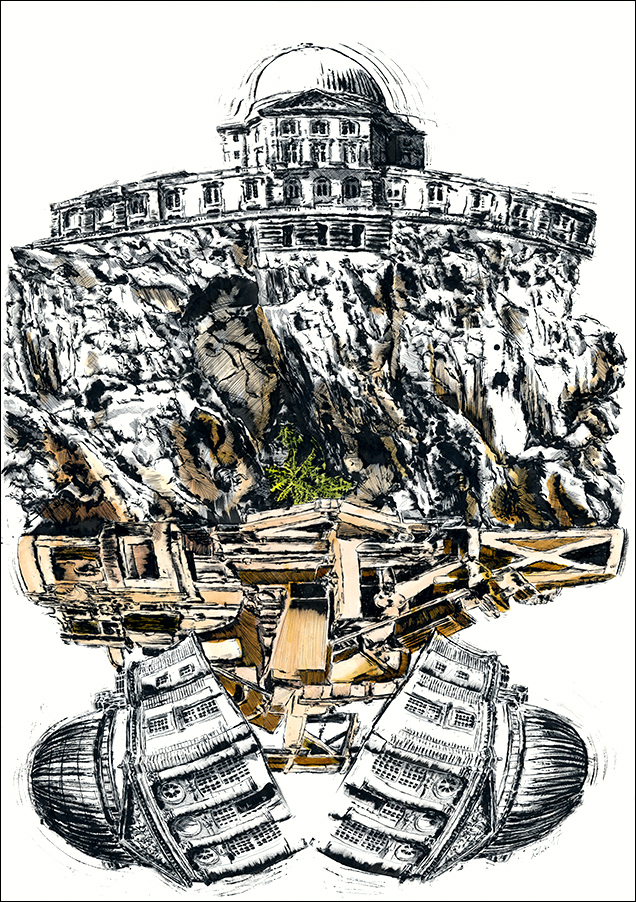
Grande Lunette
Observatory Castle Meudon with refracting telescope, France
122cm x 86cm, Dip Pen Drawing, Shellack Ink and Ink on Paper, 2017
In the dome of the former castle Meudon, the third largest lens telescope of the world was installed. It is called Grande Lunette (big glasses).
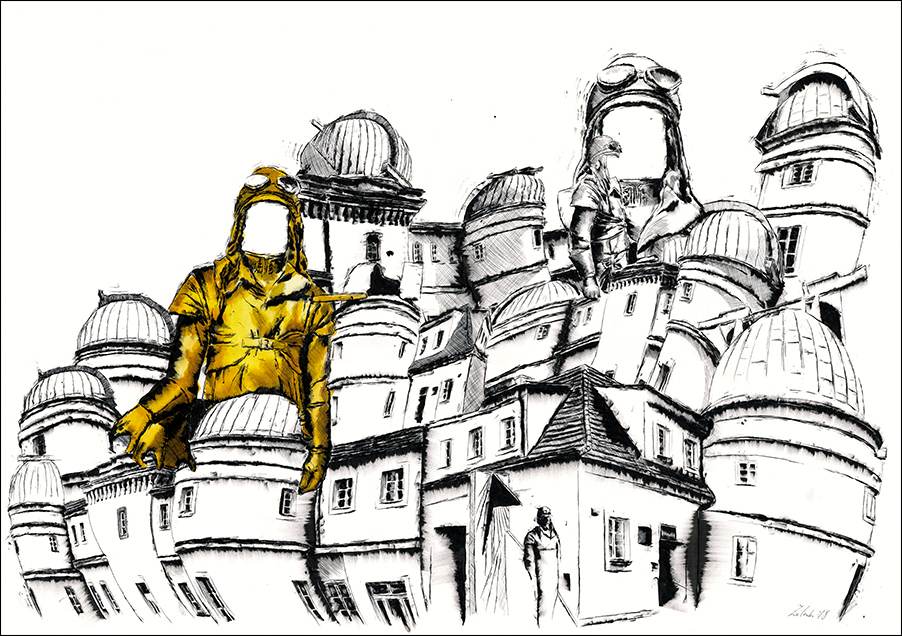
Štefánik‘s Observatory
On Petřín hill, Prague, Czech Republic
86cm x 122cm, Dip Pen Drawing, Shellack Ink and Ink on Paper, 2018
Štefánik worked at the Paris Observatory and undertook research trips to observe solar eclipses. He was one of the founding fathers of the First Czechoslovak Republic.
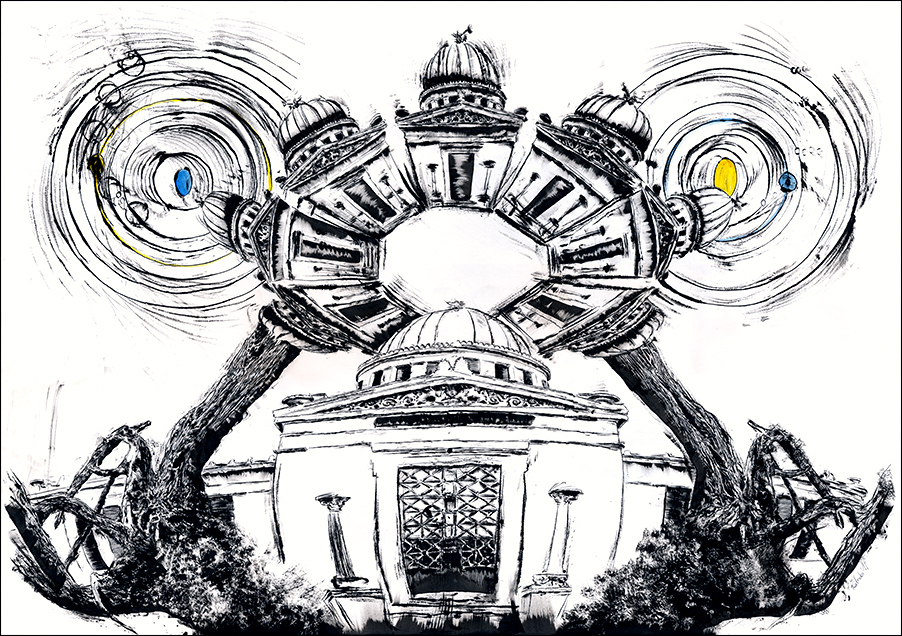
Homage to Aristachus of Samos.
Observatory Athens at the Nymphs‘ Hill in Thissio, Greece
86cm x 122cm, Dip Pen Drawing, Shellack Ink and Ink on Paper, 2018
Aristarchus of Samos (320-250 BC) was the first Greek astronomer we known, who convinced the heliocentric world-view.
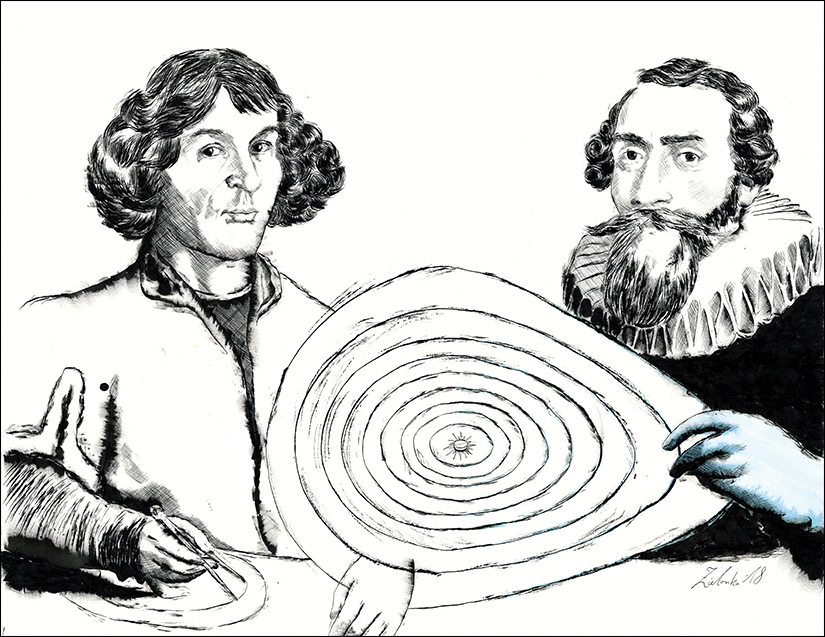
The Copernican world view saw the sun at the center of our universe. Johannes Keppler added that the planets are circling elliptically around the sun.
61cm x 86cm, Dip Pen Drawing, Shellack Ink and Ink on Paper, 2018
 Ireen Zielonka
Ireen Zielonka